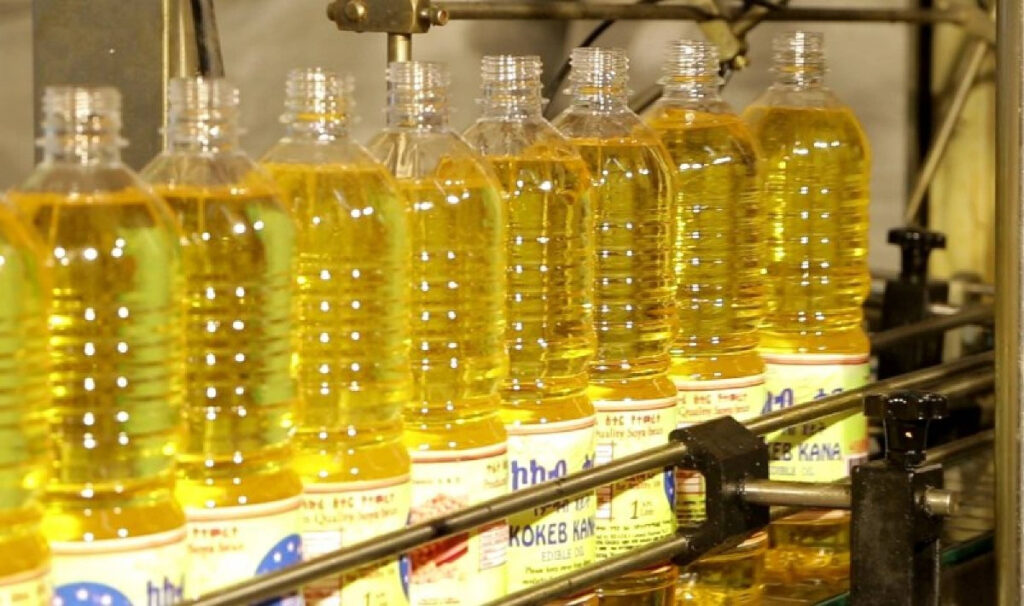
Addis Abeba – Ethiopia is gearing up to implement its first-ever industrial strategy starting in September 2023, with a focus on bolstering import substitution capability and enhancing competitiveness. According to the Ministry of Industry (MoI), the strategy aims to significantly increase the share of domestically substituted goods over the next three years, shooting for a staggering 60%, up from the current 37.5%.
The Ministry has revealed that essential consumer goods, including edible oils, pasta, dairy products, and generic pharmaceuticals, are now being successfully manufactured within Ethiopia. According to a recent report, during the 2015 Ethiopian fiscal year, local production saved Ethiopia nearly $2.3 billion in imported goods.
With a comprehensive roadmap spanning the next decade, the strategy includes specific production targets and enticing incentive packages, according to Tarekegn Bululta, state minister for Industry. Focusing on import substitution, the strategy is set to provide valuable guidance to industries seeking to manufacture locally-made goods. Among the incentives offered will be streamlined access to foreign currency, addressing a longstanding obstacle that has hampered the importation of essential inputs.
Ethiopia’s industrial policy in the last two decades has predominantly focused on export-oriented and labor-intensive sectors. These industries have enjoyed advantages such as favorable land lease rates, soft loans, tax incentives, and convenient access to foreign currency. However, despite these efforts, the country’s annual export revenue from the industry sector has remained stagnant at approximately $350 million. In contrast, Ethiopia grapples with a steadily rising trade deficit and macroeconomic instability, as its annual imports exceed $18 billion while export earnings hover around $4 billion.
In a bid to tackle the persistent trade deficit, Prime Minister Abiy Ahmed’s administration embraced import substitution as an alternative strategy three years ago. However, recent industry reports reveal that the implementation of this strategy has fallen short of expectations. The underperformance can be attributed to various factors, including shortages of raw materials, limited access to financial resources, and a lack of cohesive government support. Furthermore, the ongoing conflict in multiple regions of Ethiopia, notably in the north, has further hampered the productivity of the manufacturing sector.
The scarcity of foreign currency emerges as a prominent obstacle, hindering industries engaged in import substitution. A substantial portion of the raw materials required by these industries must be imported from overseas. However, the shortage of foreign currency has led to difficulties in opening letter of credit (LC) accounts at commercial banks.
Owners of major industries in Addis Ababa voiced their concerns during a recent consultation meeting organized by the Addis Abeba Labour, Enterprise, and Industry Development Bureau. The primary issue raised by these industrial leaders was the dearth of essential raw materials and spare parts, which they claim has compelled them to halt production and downsize their workforce.

A month ago, the Ethiopian Leather Industries Association made a formal request to the government for greater access to at least half of the export revenue generated by its members. The aim of this appeal is to facilitate the importation of essential raw materials. Imported chemicals alone constitute a significant 60% of the total production cost in the leather industry. Currently, export companies are required to surrender a significant 80% of their foreign currency earnings to both the National Bank of Ethiopia and commercial banks.
Despite facing numerous hurdles, Prime Minister Abiy’s administration remains confident in the potential of the industry sector to expand by 8.2% this year. In his recent parliamentary address, the Prime Minister highlighted that the industry sector already contributes 28% to the country’s gross domestic product (GDP).
According to recent reports, capacity utilization rates in the manufacturing sector have witnessed a significant downswing in recent years, with the average rate plummeting to under 45%. However, Melaku Alebel, Minister of Industry, revealed that this figure jumped to an encouraging 56% in May 2023.
According to Tarekegn, shifting local investors to the manufacturing sector and creating a conducive environment for foreign investors are among the strategy’s primary goals. “Set to launch in just a month, the strategy is expected to play a crucial role in fostering the success of the “Ethiopia Tamerit” campaign.”
Since May 2022, the MoI has undertaken an ambitious campaign dubbed “Ethiopia Tamerit“, roughly translated as “Let Ethiopia Produce”, with the aim of rejuvenating over 446 dormant industries identified by the Ministry. The Prime Minister recently announced that this campaign has successfully revived more than 160 industries. AS







